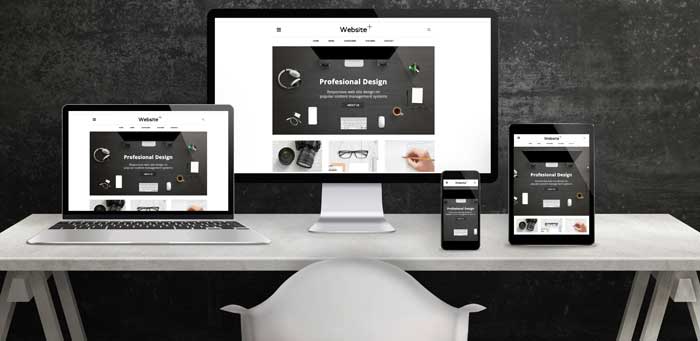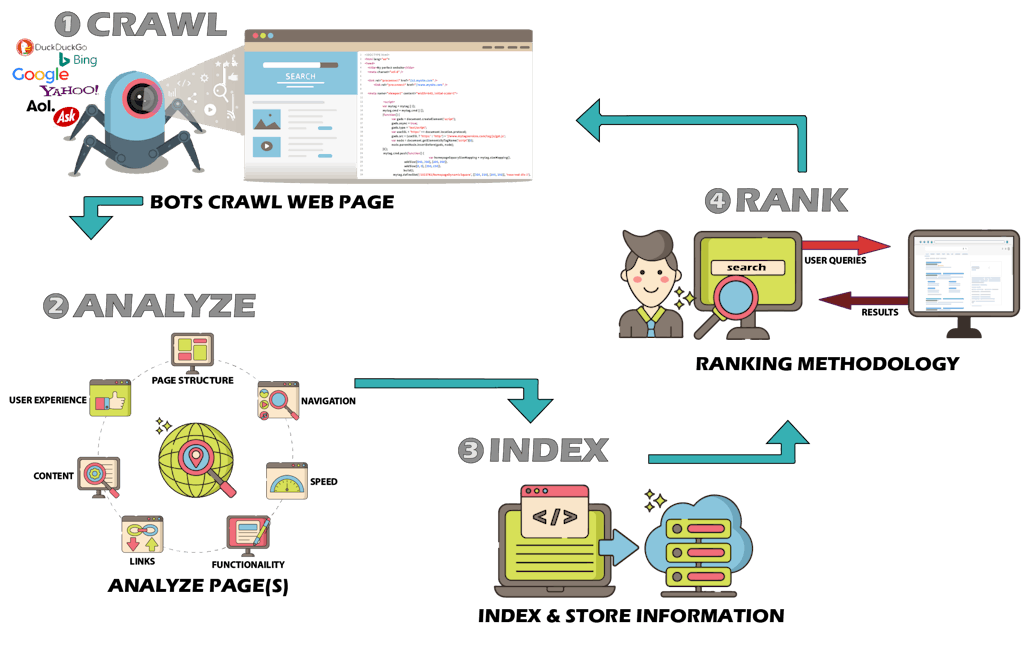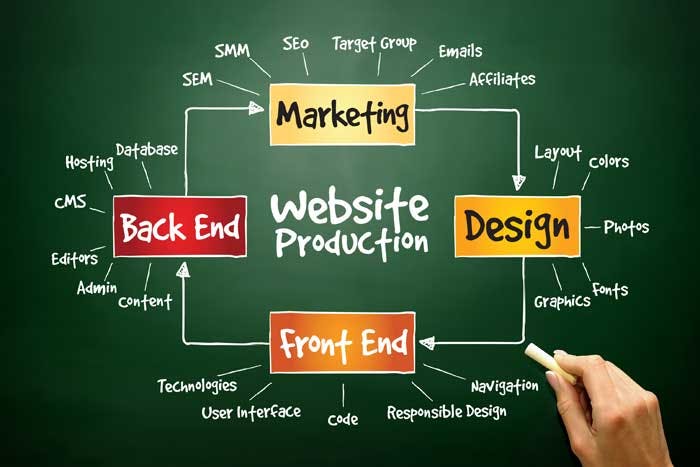|
Audio
|
Marketers and entrepreneurs may have heard that SEO is important – but few are clear just how big a difference SEO makes in their business results. Consider these statistics:
- 51% of traffic to a page is from an organic search result;
- 40% of revenue can be captured through organic traffic;
- 18% of local mobile searches result in a purchase each day.
If you haven’t considered how your page is optimized for both your customers and Google’s search algorithm, you’re missing out on a significant sales opportunity. Design elements of your page impact your customer’s experience as well as your marketing strategy. Here’s what you need to know about web design and optimization for first-page SERP this year.
SEO Basics
Before diving into the design elements of your page, it’s important to be up-to-date on the way Google and other search engines are analyzing and indexing your pages. Search engine algorithms are constantly evolving in their criteria for ranking search results. The basic process hasn’t changed; but, some elements – like mobile-friendliness – have become more important in recent months.
First and foremost, crawlability is one of the most important SEO concepts related to website design. Crawlability has to do with how Google reads, or “crawls” your website. The search engine uses a crawler, an index, and an algorithm to rank search results. The crawler finds your website, scans the content and saves it to the index. The algorithm reads the information saved in the index to determine how important or relevant your site is to a user’s search query.
Arguably, crawlability is the most important element of your website. The information Google’s crawler picks up and indexes will directly impact how the search engine values your site. If the crawler misreads your page, has duplicate content, broken links or if your page blocks crawlers, you have no chance of showing up in the Search Engine Results Page (SERP). How can you make sure your page is crawlable?
There are many ways to improve your crawlability, but the main thing as you start to design the look and feel of your page is to ensure you’re allowing the bots to crawl your page at all. These things might be preventing Google from crawling your website:
- Your robots.txt file is blocking Google’s crawler;
- Your HTTP header contains a status code that says your page doesn’t exist;
- A robots meta tag on a specific page is blocking Google from indexing your page.
Finally, before diving into design elements, it’s crucial to make sure your page is mobile-friendly. In 2020, this is about more than just having a page that’s mobile-responsive. You need to build a page that loads quickly and doesn’t block CSS, JavaScript, or images. As experts at Moz argue, “Mobile optimization takes a look at site design, site structure, page speed, and more to make sure you’re not inadvertently turning mobile visitors away.” Make these technical adjustments before diving into the design of your page.
Designing for SEO
What exactly are Google’s crawlers looking for when they scan your webpage? In general, Google is trying to ensure your website contains unique content and a great user experience. The crawlers will attempt to read and catalog the information on your pages including text, images, navigation, videos & more. A crawler attempts to discern how easy it is for a search user to accomplish their mission; when your page ranks well for Google, your customers also benefit.
Start your design with your main navigation. Google Analytics can show you where a user goes when they enter your landing page. Learn about user behavior by clicking through your User Flow data and Heatmap to learn where people are converting – and where they’re dropping off. Once you understand how visitors engage with your pages, you can create a main navigation that helps someone find what they need quickly. Put links to your best-performing pages right in the main navigation menu.
Next, consider what content you’re offering that’s unique and helps a customer learn the information necessary for completing a purchase. Make your website stand apart by creating high-quality content and you will surpass your competitors and encourage visitors to spend more time on your site.
Not only are you serving your customers by offering great content – you’re also improving your SERP result. More than 55% of marketing executives report that on-page content is the most effective SEO tactic. What does it mean for content to be high-quality? It means your webpage offers information that is:
- Informative
- More valuable than content on other sites
- Credible
- Distinct
- Engaging
Content can include text, images, videos, infographics, and more. Don’t be shy about including different types of media in your website design. The overall goal of your content should be storytelling. As the experts at Yoast explain, “Storytelling is good for SEO because it will make your post nice to read. And, creating content that people like is exactly what Google wants. If you’re writing blog posts people enjoy reading, you’ll increase your chances to rank high in Google.”
Tips for better conversion architecture
A thoughtful main navigation menu and great content will start you off on the right foot toward better SEO rankings. The next step is considering your conversion architecture.
Conversion architecture refers to strategically using style and design elements on your site to encourage conversions. This can include typography, color, readability, and calls-to-action. Use headings and subheadings to make it easy for someone scrolling to find what they want. Keep your call-to-action buttons mobile-optimized so someone can tap the button easily. Use high-quality images that support the content and aren’t too big in file size; large files can slow down page speed, causing your audience to lose interest. Move customers through your funnel efficiently by giving them the information they need to go from one stage to the next with relatively little effort.
If you aren’t sure where you’re losing customers from your funnel, look to Google Analytics for deeper insight. Your analytics can show you where people enter your site, what they do once they get there, and where they exit without completing your desired action. From there, you can restructure the page to make it easy for someone to convert. For help in designing your website for great SEO results, get in touch with the experts at Unreal Marketing.








